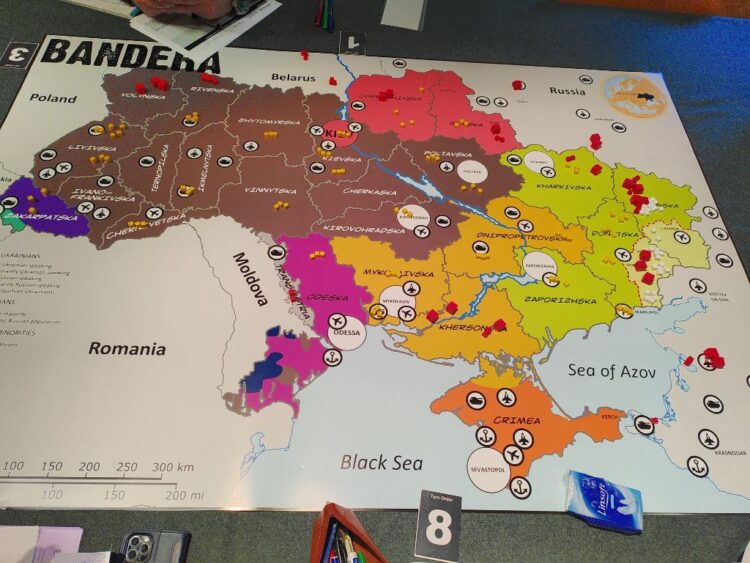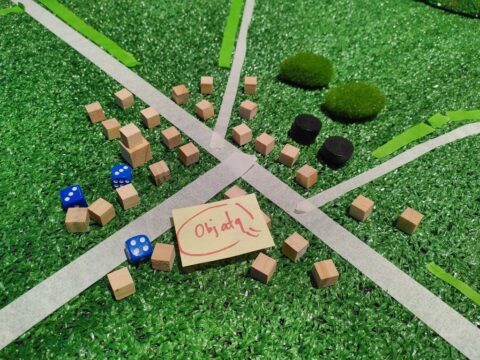Three days of wargaming, around a “matrix game” to represent the war at the political and strategic level, adapted from existing rules and elements, augmented by the implementation of an operational system to represent war operations, allowed about twenty people to confront the visions, dilemmas and consequences of the main actors and decision-makers of the war in Ukraine.
In order to achieve this, it was necessary to prepare credible and detailed scenarios and situation reports.
The Centre d’Histoire et de Prospective Militaires (CHPM) – a private entity which deals primarily in military history and strategic studies – is known for its long tradition in military foresight. In 2018 in Payerne and in 2019 in Pully, it was the history and application of simulators and wargaming that brought together experts on the subject. On October 29, 2022, the success of a new “Wargame” event led us to develop a project that aimed to analyze and understand the issues and actions underway in Ukraine.
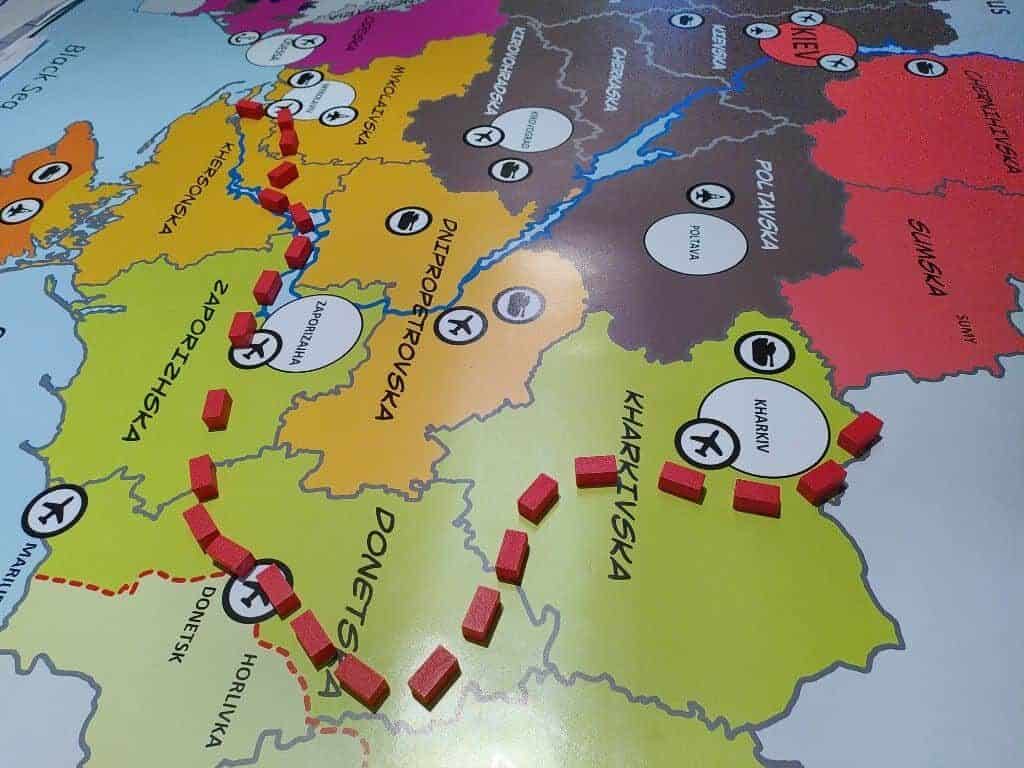
An important preparation was necessary to adapt the existing working tools and rules. In three separate sessions the system was perfected. The system now works in two different but connected phases through space and time – one, of a qualitative nature between the strategic, political actors, and taking place in two-month turns; another, which brings together the military leaders on the operational level and in a quantitative approach, where each turn represents a month of fighting.
The art therefore was for the teams of actors and their allies to coordinate their actions, in order to synchronize their effects, in a competitive and evolving environment – it is not a zero-sum game, as in reality the objectives of some are sometimes concordant with those of others, and sometimes part of the ongoing political confrontation. This was made possible by developing a set of actor cards and general politico-strategic goals, allowing actors to deduce their strengths and weaknesses, but also to be able to advance their “political game” in a coordinated way with others, either by displaying their objectives or by keeping them secret.
The first day (28.01.23) was devoted to the first two months of the war. The second (11.02.23) focused on the counter-offensives of late August and early September 2022. The third session (25.02.23) took as a starting point the current situation (March 2023). This last session highlighted the value of the matrix game to conduct foresight in a changing strategic environment and raised the question of options for ending the conflict or at least stopping the fighting.
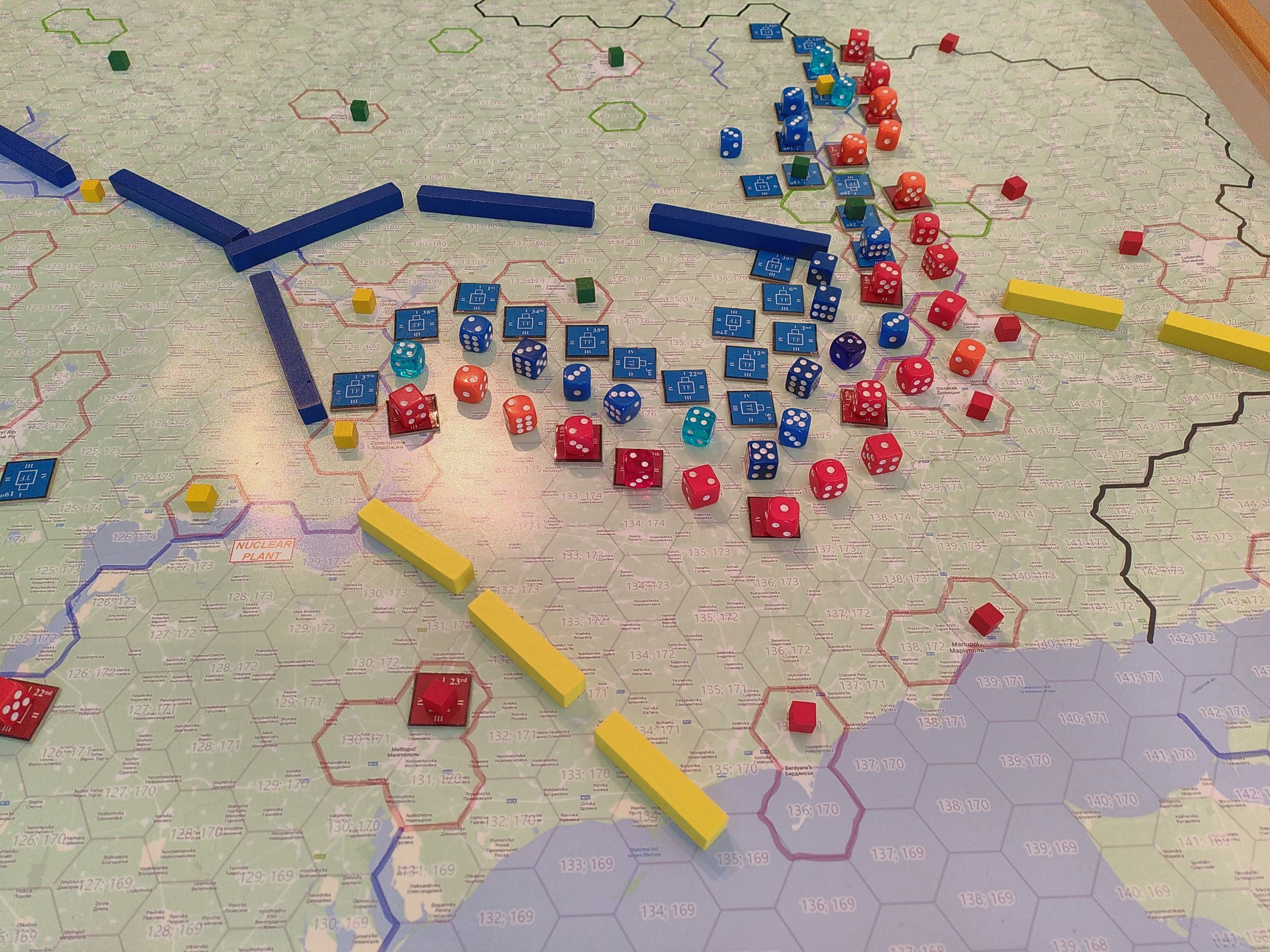
Some lessons learned
The wargame makes it possible to distinguish the dependent variables from the independent variables of a conflict in evolution, measuring or comparing the effect of certain actions. It was thus possible to demonstrate that a Russian airborne operation in the Lviv region at the very beginning of the conflict, with the aim of tying up Ukrainian forces and interrupting the supply of Western war material, did not have the expected strategic effect, even if this action was perfectly executed on the tactical level.
A narrative rather than a simulation
The coherence of the actions is decisive, according to a “narrative” that is pursued and developed each turn. It is hardly possible to simulate saturation and the number of simultaneous actions in a regulated game. On the other hand, the designation of centers of gravity and lines of operation with clear intermediate objectives is essential. The chosen methodology favors resolute and coordinated actions, ambitious in their aims and solidly argued to be able to succeed. This process produces arguments, counter-arguments and debates. The debate and the attribution of a relative probability for each action taking place – the matrix game calls upon a cognitive approach called “collective intelligence” which is too often underestimated – ultimately allows new issues to emerge. This tool therefore allows us to ask ourselves the right questions. Each actor is then encouraged to conduct a subsequent analysis on the issues that particularly interested him.
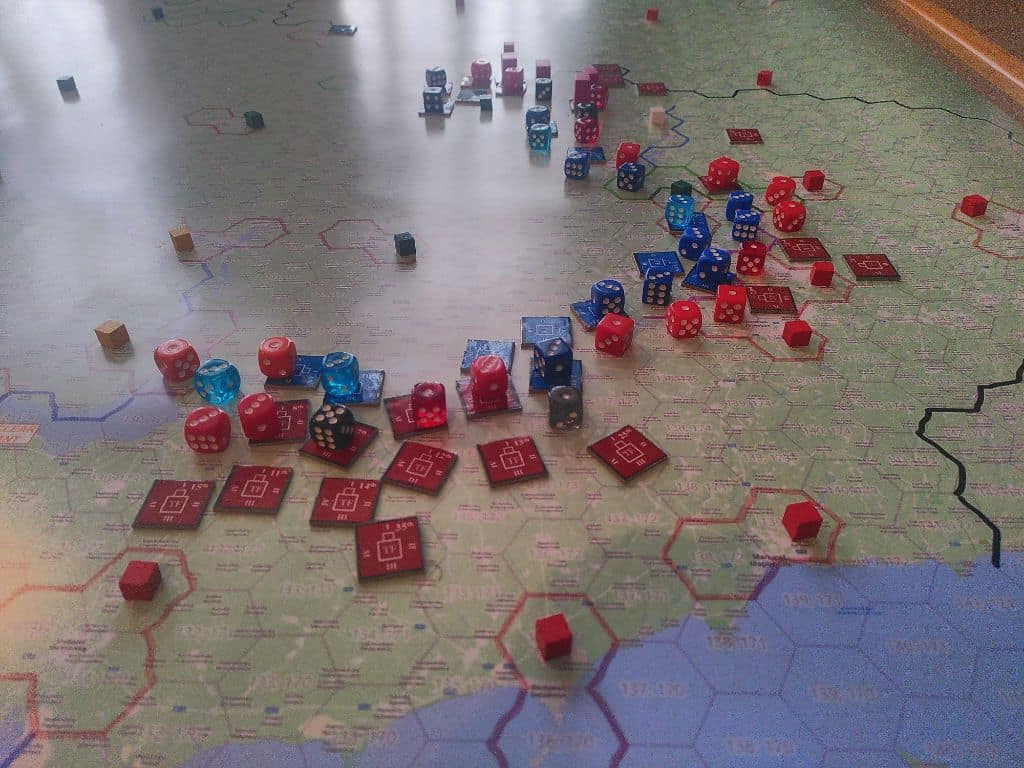
Tactical and strategic evolution
Tactical evolution is essentially based on a combination of quantitative factors, probabilistic calculations and a dose of uncertainty – this randomness is easily represented by the roll of the dice. At certain points in the campaign, this can result in major tactical successes for Russia, as well as major setbacks due to internal crises. The wargame allowed to explore the positions of the players in these extreme situations.
Strategy, operational art and tactics are different disciplines of war. While being interconnected, they are not guided by the same principles. Tactical principles do not apply to the strategic field and vice versa. Working for political change requires other imperatives, notably a greater level of abstraction, than maneuvering on the battlefield, and it requires actors to be intellectually flexible.
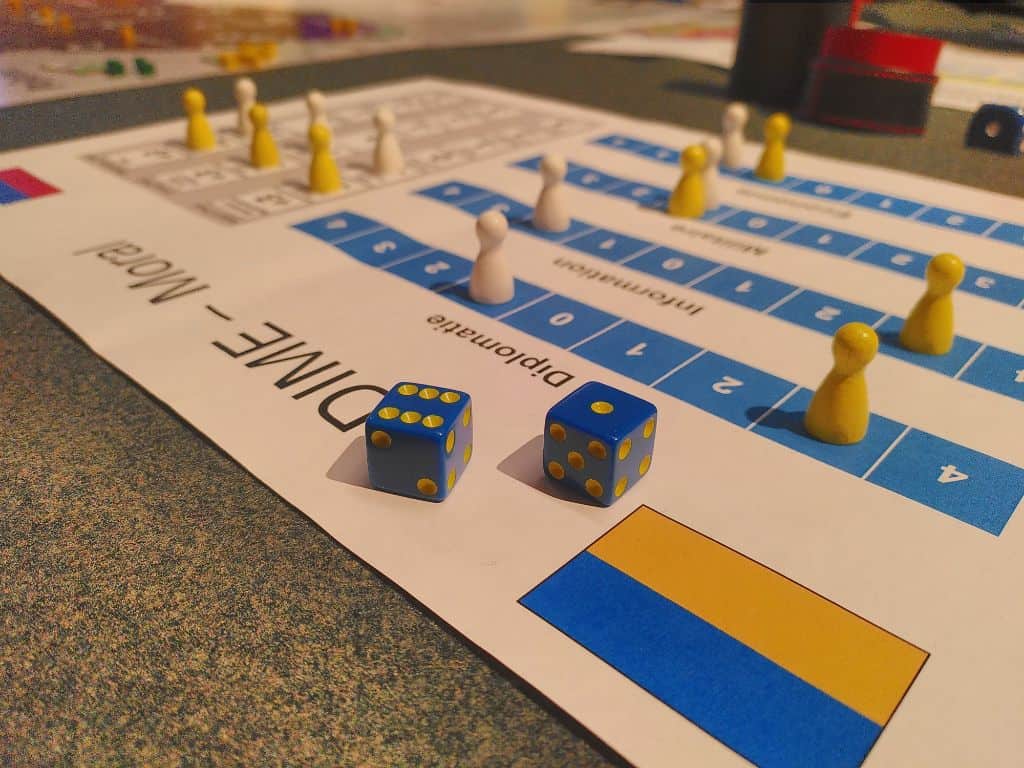
Engaged and reluctant international parties
In general, we can see various interesting narrative elements at the end of this project. Also, during the wargame Belarus has repeatedly stated its intention not to intervene in Ukraine, either to keep a margin of maneuver vis-à-vis Russia, or to serve the interests of Russia. Current events show us that Belarus is maintaining this ambiguous position.
Iranian and Chinese actors quickly tried to use the situation to their advantage and to intensify their commercial and potentially dual-use exchanges. While it has be considered with caution, this reinforced relationship was confirmed at the beginning of 2023 with the recognition of Iran as a member and no longer an observer within the Shanghai Cooperation Organization (SCO) and with the prospect of a strategic agreement between the two countries.
The wargame also allowed for the emergence of “multiform” players. For example, Turkey tried to play a balancing act between West and East, sometimes dangling economic aid to Kiev and sometimes holding out the hand of conflict resolution and appeasement to Moscow. Prigozhin, owner of the private military company “Wagner”, was also interesting, as he was the only non-state actor in our scenario. On the other hand, his transnational influences, his past and criminal links, as well as his strong rivalry with the Russian armed forces, allowed for a complex narrative to emerge – this is both limiting for this actor, as he does not necessarily receive what he asks for from the armed forces, but this competition allows him to stay close to Putin and continue to prosper.
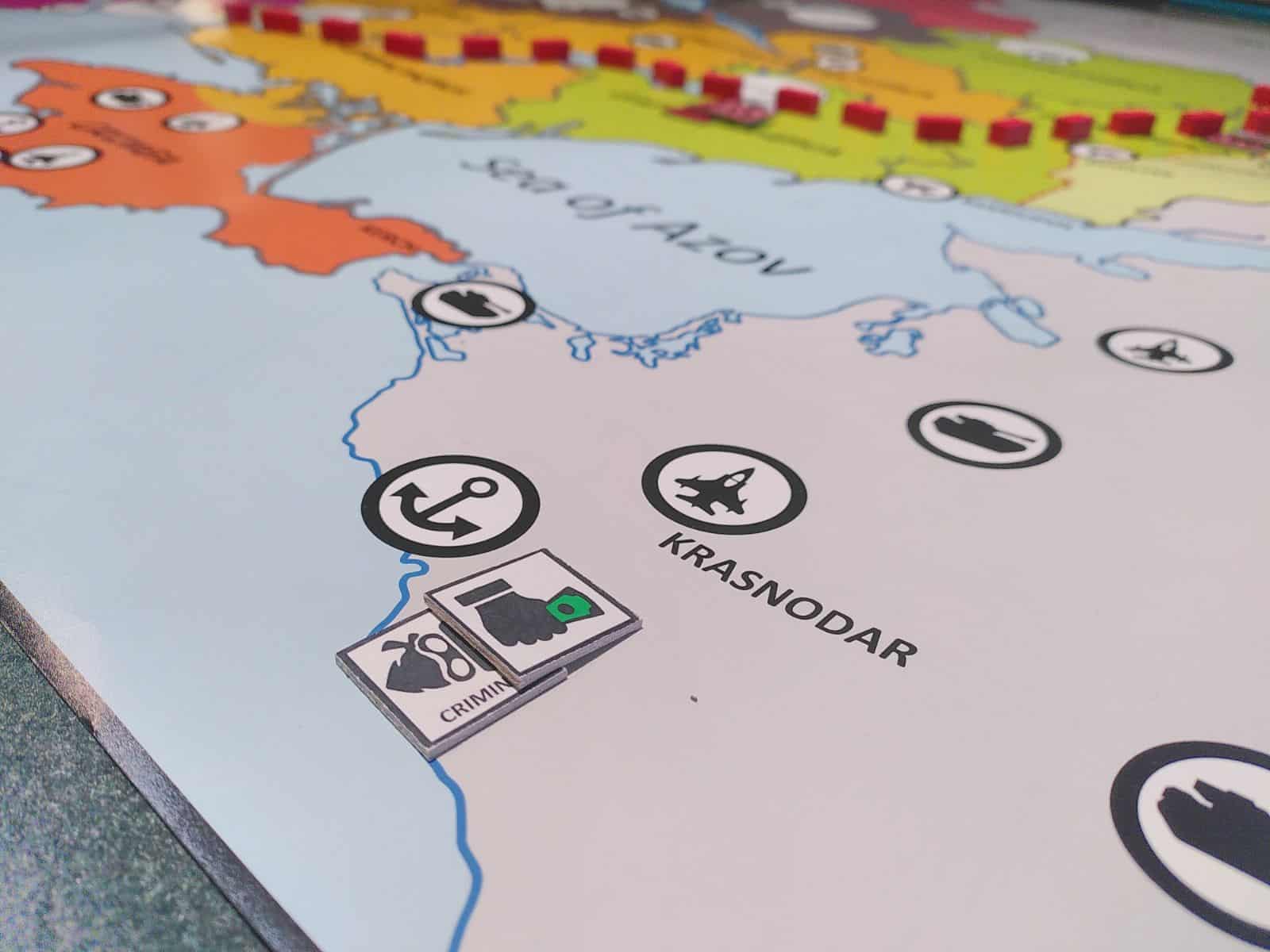
Wargaming as a start
Finally, it is important to remember the qualitative and non-reproducible dimension of a wargame. It does not solve problems and only provides pieces of information that need to be analyzed in detail. On the other hand, this method allows isolated facts, problems, and potentials to emerge – it opens doors to even larger fields of analysis. While some would be ready to criticize this method from the outset for its lack of seriousness, we would reply that before exposing the human mind to the immensity of possibilities, it is necessary to begin by offering a synthetic access to the intellectual field in question. A wargame makes it possible.

The CHPM “Wargaming” team has prepared an ambitious program for 2023. Read all about it in this article.

